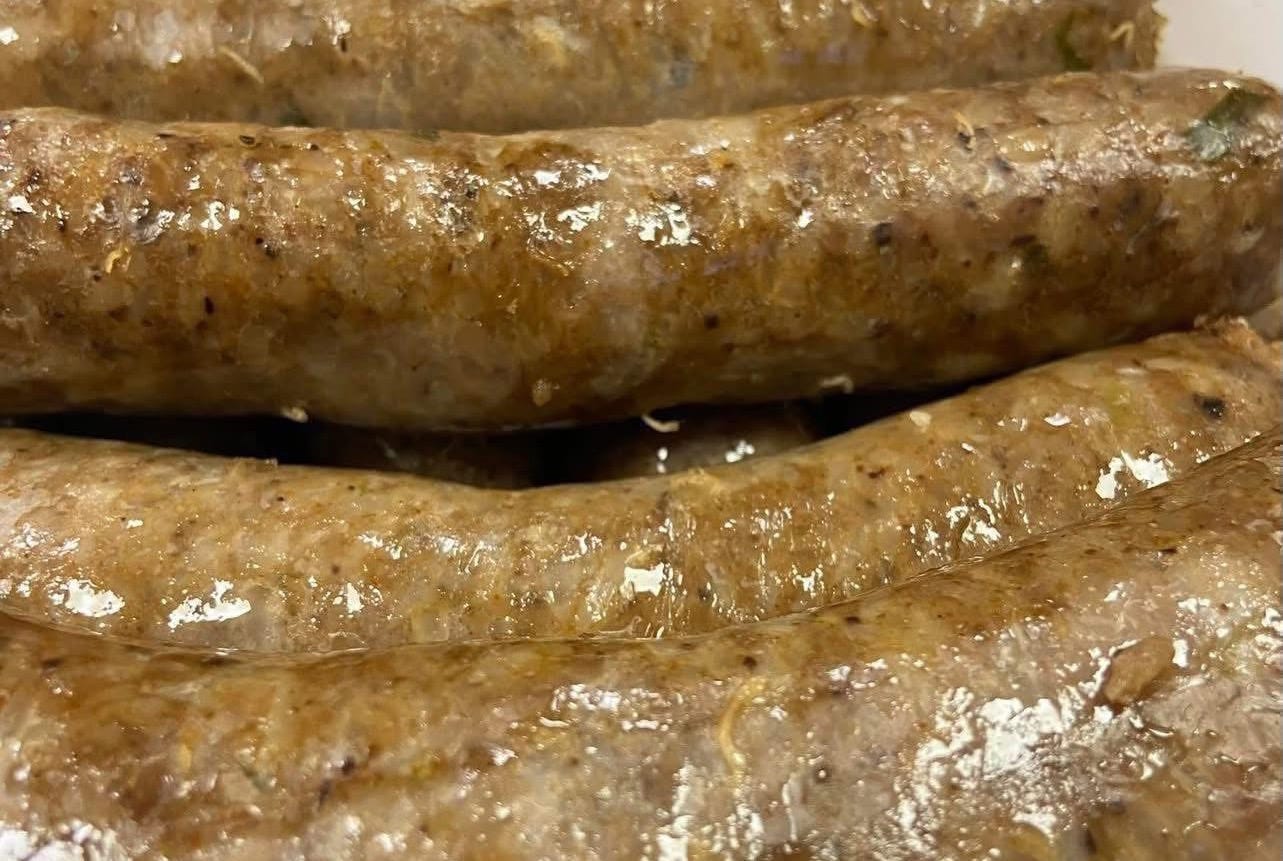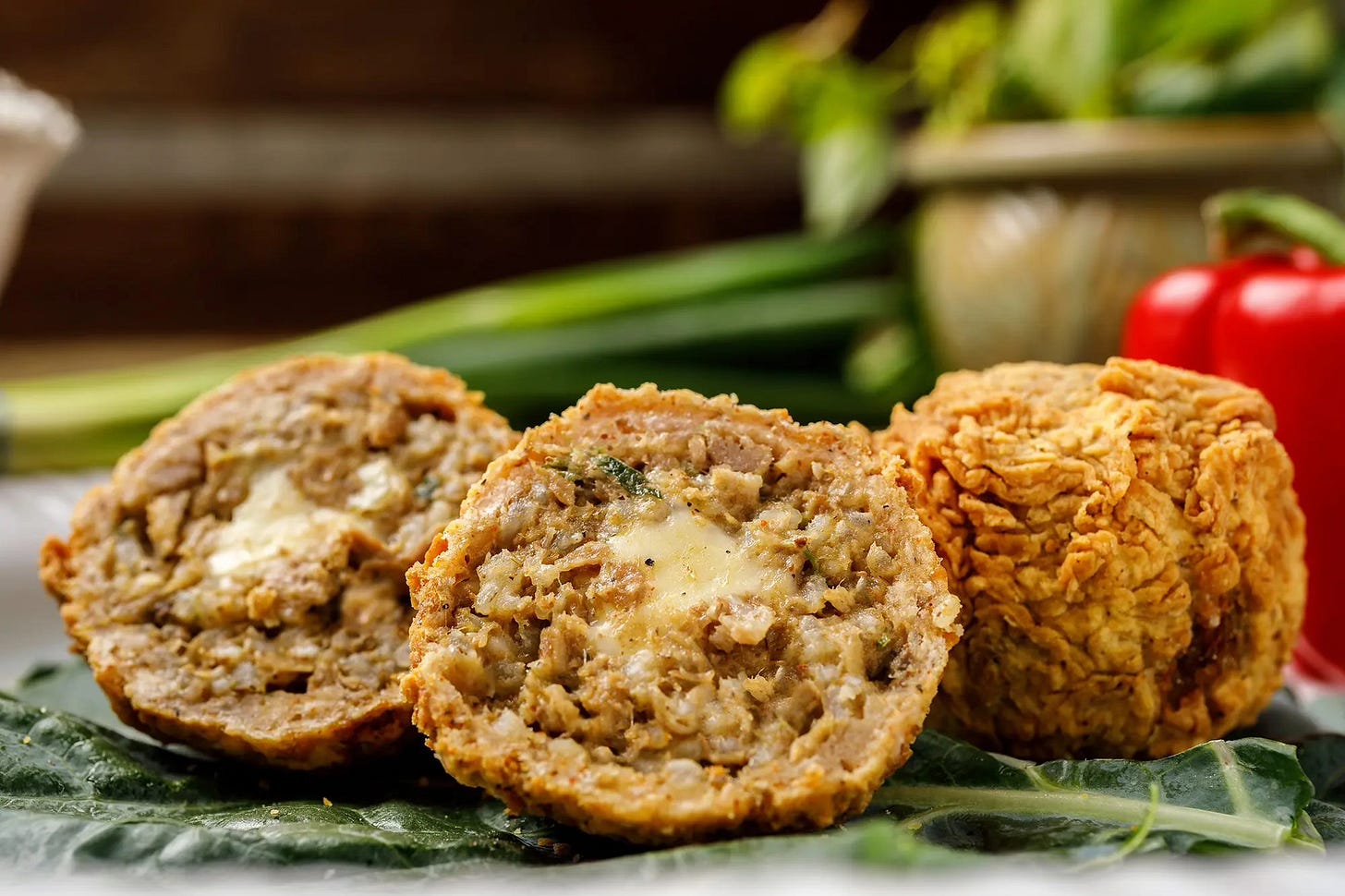Boudin (pronounced boo-dehn or boo-deh) is a savory type of sausage filled with cooked pork, rice, and Cajun/spicy seasoning, all stuffed into a casing and formed into links.
Most people steam or simmer them but my favorite is smoked boudin. Even though it looks like a regular sausage link, Louisiana folks don’t eat it like one. We squeeze the filling out of the casing and straight into our mouths, or slice it open to get straight to the good part.
But the way this delicacy is prepared depends on culture and tradition. In some communities, it still requires days of preparation…and pig’s blood.
More on that in a minute.
In the area I grew up, known as Acadiana (or Cajun Country), there are many specialized meat markets and family-run businesses that specialize in boudin. And it’s not just your mawmaw’s boudin. One of my favorite modern options is pepper jack boudin balls, which is exactly what it sounds like: A deep-fried ball stuffed with spicy boudin and oozing pepper jack cheese.
There’s also seafood boudin, pistolettes (small bread rolls stuffed and fried), and more.
Boudin has deep roots in both Creole and Cajun culture, often overlapping in recipes and preparation styles. The common denominator is French influence. In France, the word “boudin” traditionally means blood sausage.
In Sweetie’s Diner, my Sweeney Todd inspired, southern ode to the Black-owned food spots I grew up with, Mr. Martin comes in for his favorite dish: a blood boudin sandwich—on Evangeline bread (Evangeline Maid bread is a staple brand in the Acadiana area). The story explores themes of sacrifice and the sometimes bloody price of “progress”.
I was also inspired by how certain foods become regional staples. By the 1960s, boudin’s popularity exploded, especially in the Acadiana area where tourism and a growing interest in all things “Cajun” food helped to propel the dish into the spotlight.
But behind all the hype, many Black-owned plate lunch spots fought to stay afloat. Some were lost due to various issues, but many still stand, creating a legacy of food culture in the region.
Now, back to the blood.
Blood boudin (boudin rouge) is the traditional way boudin was prepared, made with the boiled blood of a slaughtered hog. It was one way to use every part of the animal. That method was brought to Louisiana by French, and later Acadian, settlers.
Eventually, the slaughtering of the hog became something festive, evolving into a Boucheries : community butchering events. Each person had a role. One person was responsible for collecting blood from the hog and storing it until the butchering process was complete. The blood was simply mixed into the mixture and eventually stuffed into the casing by hand.
Overtime, the popularity of blood boudin has waned, especially as food safety regulations made it harder to prepare and sell it legally. I haven’t seen boudin rouge at any specialty meat markets in quite some time. However, I’m sure someone’s pawpaw is making some behind the house as I type.
Much like the main character in Sweetie’s Diner, boudin’s history is about survival. It reminds us to make use of what we have, no matter how messy it can get.
To learn more about how boudin is prepared in other countries, check out this link about Boudin and Rebellion in the Caribbean.
And if you’re in the Acadiana area, be sure to stop by some of my favorites:
Billy’s Boudin (The pepper jack boudin balls!)
Loving the ride so far?
I’m so glad you're here. If the stories of Haintland sink their teeth into you, I hope you’ll consider:
Leaving a comment
Sharing with a fellow horror fan
Subscribing
Pledging financial support




